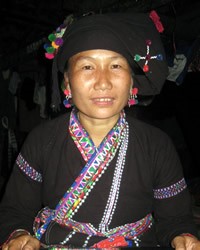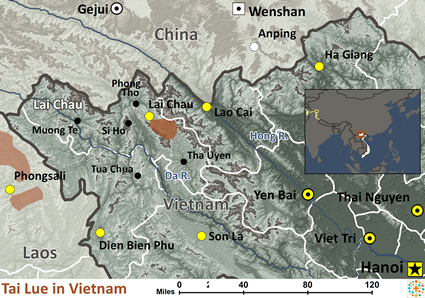The Tai Lue are part of the official Dai nationality in China. Although the name "Tai" is said with a "t" sound, the Chinese pronounce it as "Dai." One early missionary described them in unflattering terms: "The Lue impressed me as less civilized as any Tai people I had ever met. They are less polite and deferential, more talkative, even rude in their manners. They are less timid, more sturdy, more hospitable, more receptive."
The Tai Lue possess an ancient script, still used by Buddhists in the region. This profile refers to the Shui (Water) Dai in China who speak a different language from the Han Tai and Huayao Tai.
By the ninth century AD, the Tai Lue had a well-developed agricultural system. They used oxen and elephants to till the land and constructed extensive irrigation systems.
Each year the Tai Lue celebrate the Songkran Festival, when people splash water over each other, symbolizing the cleansing of sin from the previous year and a fresh start for the new year.
Indonesians in Vietnam fit in with the local culture, but they retain their Sunni Muslim faith.
Muslim Indonesians need to know that Jesus Christ offers them eternal life, and life to the full to those who will call upon His name.
Pray for the authority of Christ to bind hindering spiritual forces to lead them from darkness to light.
Pray for signs and wonders among them and for great breakthroughs with a rapid multiplication of disciples and house churches.
Pray for bold workers who are driven by the love of the Holy Spirit to go to them.
Pray for an unstoppable movement to Christ among them.
Scripture Prayers for the Tai Lue in Vietnam.
Peoples of Vietnam, Asia Harvest, Copyrighted © Used with permission.
| Profile Source: Joshua Project |


























